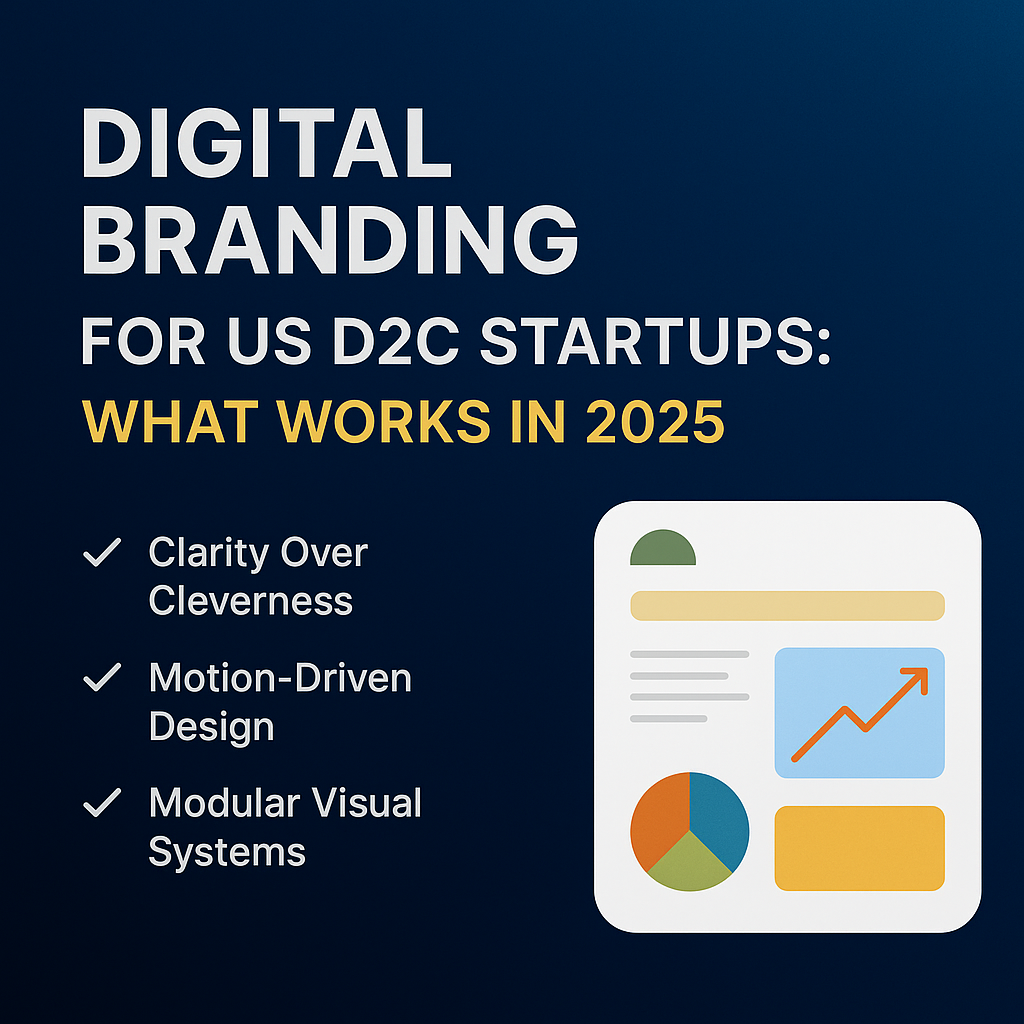As a digital branding agency working with ambitious D2C founders, we’ve seen firsthand how a strong D2C brand identity — aligned with emerging USA design trends — helps startups cut through the noise.
The D2C (direct-to-consumer) wave in the US has evolved from trendy minimalism to strategic storytelling. In 2025, digital branding for D2C startups is not just about looking sleek—it’s about being scalable, socially integrated, and emotionally resonant.
For startups launching in competitive verticals like wellness, apparel, tech accessories, or food, effective branding builds trust instantly and drives conversions across channels. In this article, we break down what’s working for D2C brands in the US right now—and how KDesign helps new ventures launch with visual precision.
The Pillars of Digital Branding in 2025
- Clarity Over Cleverness
The strongest D2C brands today lead with simple, benefit-driven messaging. No jargon. No ambiguity. Just clarity of value and purpose.
- Motion-Driven Design
From animated product UIs to social stories and video-first landing pages, motion is the language of today’s digital shopper — a hallmark of forward-thinking USA design trends. - Modular Visual Systems
D2C startups need visuals that adapt — on Instagram, email headers, packaging, and even retail pop-ups. Design has to flex without breaking, ensuring a cohesive D2C brand identity across platforms. - Founder Storytelling
Audiences want a real human story. The founder’s personality is now a brand asset — something a smart digital branding agency knows how to highlight effectively.
Use Cases for 3D Environments
- Virtual Showrooms
Ideal for automotive, electronics, luxury products, and interior brands. Users can browse, rotate, and interact with 3D product models in a curated space. - Virtual Events & Expos
Digital pavilions, booths, speaker halls, and networking lounges—all rendered in real-time or pre-animated environments. - Training & Simulations
Safe, cost-efficient environments for onboarding, machinery demos, or soft skill simulations. - Retail Metaverse Concepts
Immersive e-commerce spaces that mimic physical retail while adding gamification and personalization layers.
Real-World Insights: D2C Branding That Works
For an in-depth look at how D2C brands succeed in competitive markets, check out this case study by Shopify Plus on D2C growth strategies in the US:
How D2C Brands Are Winning: Shopify Plus Case Study
It highlights how leading D2C companies craft their branding, streamline operations, and leverage customer stories to stand out — aligning with the principles we’ve outlined here.
Where Startups Go Wrong
Overuse of minimalism without meaning
Inconsistent branding between platforms
Low-res or generic stock visuals
Messaging that focuses on features, not outcomes
What Works for US D2C Brands in 2025h
Personalization at scale (e.g., modular logos, localized CTAs)
Motion graphics for onboarding and post-purchase flows
Brand kits built around storytelling, not just logos
AI-enhanced content creation backed by strong design systems
How KDesign Supports D2C Brands
We work with founders to co-create brands that convert — from product mockups to content calendars — and bring clarity to your D2C brand identity while reflecting USA design trends.
Our services include:
Logo, packaging, and digital templates
Product renderings and animation
Landing page + email design systems
Founder storytelling decks and visuals
UGC kit development (influencer-ready assets)
Final Thoughts
Launching a D2C startup today requires more than a good product. You need a brand that moves fast, speaks clearly, and looks stunning across touchpoints.
At KDesign, we combine design craft with market insight to help US startups scale with confidence — delivering a D2C brand identity that reflects the best of USA design trends and resonates with your audience.

